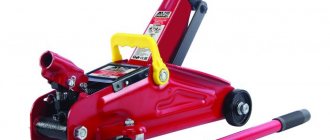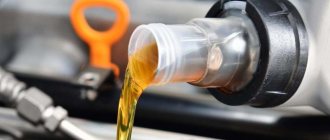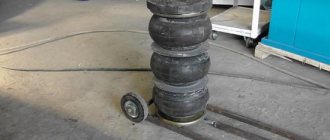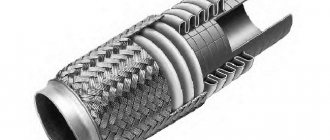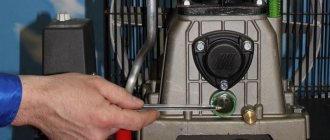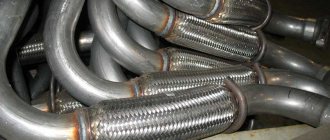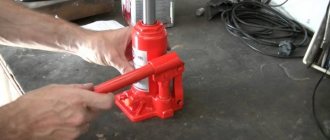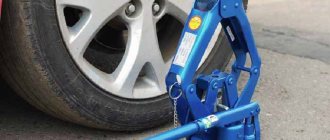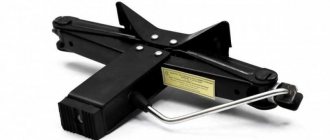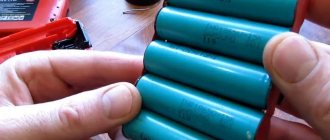Application of hydraulic jacks
Lifting devices are used for fixing, moving and lifting heavy loads: building slabs, machine tools, cars, columns. Their carrying capacity can be hundreds of tons. Depending on the purpose, the design and dimensions of the machine vary. High performance and ease of maintenance have made jacks indispensable in manufacturing, car service stations, the processing industry, power plants, warehouses and other production areas. Car enthusiasts also cannot do without their own compact lifts. And the ability to move loads vertically and horizontally is used everywhere on construction sites.
Hydraulic lift device
The main components of the system are the housing, the movable piston and the liquid medium (machine oil). The body is made of durable metal in the shape of a cylinder. It serves as both a guide for the rod and a container for technical fluid. Additional elements that bring the device into operation:
The use of valves makes it possible to increase the force applied to the lever tens of times. The plunger is necessary to move the piston by transporting the working fluid into the container below it. The valve prevents liquid from flowing back into the common container. Gradually, the plunger pumps more and more liquid under the piston, raising it. And in order for the load to drop, you only need to allow the oil to return to the common container by slightly opening the valve.
Pros and cons of hydraulic jacks
- high power;
- ease of operation and maintenance;
- high level of efficiency - about 80%;
- ability to move cargo weighing up to 200 tons.
- are not able to lift loads from low heights;
- the level of lowering the load cannot be determined;
- requires constant monitoring and maintenance: adding oil, replacing gaskets and seals;
- they can only be transported and stored in a vertical position, otherwise the working fluid will leak out;
- they work quite slowly, cyclically, lifting the load to a small height each time;
- quite expensive;
- they break down more often and repairs are more expensive than their mechanical counterparts.
Types of hydraulic jacks
Several types of devices have been created that are convenient for use in various fields:
The bottle jack is the most common and simplest design. It is capable of lifting from two to hundreds of tons, has a large support area and a compact body. Therefore, such mechanisms are usually used when repairing various types of vehicles, especially trucks. Bottle jacks can have a double-rod or single-rod design. Single-rod, simpler devices, are used in the maintenance of railway cars, in construction, mechanical engineering, and in the production of pipe cutters and pipe benders. Double rod models work vertically and horizontally.
The design of a rolling jack resembles a trolley, which during operation moves under the lifted load. Operated by a hand lever and regulated by an oil valve. To open the valve, you must turn the valve screw handle. Very convenient for one-sided lifting of loads. Therefore, it is good when changing a wheel. But it works exclusively on hard and flat surfaces. There is a transmission type that has a rotating frame in its design.
Hybrid jacks are also called two-level jacks and are used in car repair shops. Their convenience is the presence of a couple of platforms for cargo. In fact, it is a combination of bottle and roll-on models. The machine is controlled by a foot pedal and lever.
The diamond jack is also used in car repair shops. The bearings, connected by hinges, form a rhombus. Hence the name of the mechanism. A very compact device, easy to transport and store.
A hook jack is good where it is necessary to lift a load from a small height: moving machine tools, railway rails. The design is based on a bottle design.
Tips for use
The secret to the uninterrupted and long-term operation of any tool lies on the surface and is available to anyone who wants to maintain its effectiveness for a long time. Modern safety precautions and operating rules are compiled on the basis of the vast experience of manufacturers and users of technological equipment. If you follow specific and quite simple recommendations, you will not need to pump the jack very soon, and the ease of use of the tool will always be at its best.
- Exceeding the permissible load in 9 out of 10 cases leads to breakdown of the device. You should not allow peak values, but limit the range of weights lifted to 95% of the capabilities declared by the manufacturer.
- The jack should only be installed on a flat and hard surface. Lifting loads with an unstable support point increases the chance of failure with unpleasant consequences for the object, tool and operator.
- When lifting the car, you need to make sure that the wheels are secured with the handbrake or supports.
- To lower the jack rod, turn the bypass valve smoothly, no more than 1 turn. Slow opening of the channel will not allow the liquid to quickly flow into another tank and the load to lower without jerking.
- To avoid liquid leakage, the jack should be transported in its working position. Bottle and diamond-type containers are transported in a vertical position, while roll-type containers are transported in a horizontal position.
- Do not allow the jack to come into contact with water to avoid corrosion. If dirt or moisture gets in, wipe it off with a dry cloth.
- Moving parts such as the lever mount and pump piston and extension screw should be lubricated periodically. The last two elements should be omitted after work. Storing a hydraulic jack with the screw and pump piston raised may cause corrosion.
Save this page on your social media. network and return to it at any time.
Do-it-yourself repair and bleeding of the jack
There are several factors that lead to malfunction of the hydraulic lift:
- lack of oil;
- air penetration;
- accumulation of dirt and rust;
- rod deformation.
During use of the device, oil gradually leaks out, so it should be added from time to time. This is done using a repair kit. Before starting work, you should prepare a bucket for draining used and fresh technical oil.
- use wrenches to remove the fastening;
- you get the drain valve and piston;
- pistons are cleaned of dirt, rust and checked for chips and deformation;
- The bleed valve is thoroughly cleaned inside and out. If chips or bends are found on the valve, it is useless to put it back; it must be replaced. When inspecting the valve, it is important not to lose the metal ball. Its loose fit to the saddle disrupts the operation of the jack;
- Now the used oil is drained by pumping: the lever must be moved up and down until the oil passes into the main cylinder. Bleeding the jack is usually not difficult, although it does require patience;
- after draining the oil, all other parts are cleaned;
- Gaskets and cuffs are replaced, since their defects are often impossible to notice, but under pressure they make themselves felt.
The best way to clean the jack from dirt is to wash it with kerosene. After bleeding the oil, kerosene is poured into the working container and the jack is pumped. The locking needle is first removed. After which the kerosene is released and the device is filled with new working fluid.
Air penetration
During operation, air penetrates into the cylinder, collecting in a bubble, which gradually deteriorates the efficiency of the mechanism. Most often, air enters when there is a lack of oil. To get rid of the problem, you need to bleed the lift:
- remove the oil tank plug;
- The oil valve opens;
- The jack is pumped intensively several times.
Troubleshooting Methods
Oil leakage is the main problem, due to which the rolling jack does not lift completely (if the leak is small) or at all (if the leak is significant). Because of this, air enters the cavity, and then the hydraulic jack works with little force or refuses to work at all. Leaks in the hydraulic system can be prevented by routine maintenance and checking the oil level. If the level is low, you just need to add fluid to the normal level.
Due to lack of fluid, air leaks into the hydraulics. This problem is solved by bleeding: you need to unscrew the cap of the oil tank and the bypass valve, and then simply pump the system, that is, move the lever up and down until the liquid passes into the main cylinder.
Often the cause of hydraulic jack malfunction is corrosion on the pistons, rods and cavity of the unit. To determine the cause in detail and repair it, you will have to disassemble the device.
A bent rod is also a common reason why a rolling jack does not lift or operates jerkily. In this case, you can change this element by taking an analogue from the old model, or purchase a new part. In most cases, such a malfunction cannot be repaired at all, even in a workshop or service center. This is explained by the fact that the rod usually bends under shock loads, and in this case the main elements of the housing are damaged. In this option, it is cheaper to purchase a new unit without having to restore or replace individual parts.
When the bypass valve becomes deformed or dirt simply accumulates in it, the valve ball sits tightly in the seat and hydraulic fluid leaks through it. In this case, you will simply have to replace it and replace the old (contaminated) oil with new one.
What types of hydraulic jacks are there?
There are 6 main types of hydraulic jacks. All varieties are very convenient to use, but due to their features they are not widespread everywhere. Most often you can find bottle types of hydraulic jacks, since they are small in size and cope well with the tasks.
Bottle jack
The design of the device is quite simple, but the device is capable of lifting from 2 to 100 tons. Due to the small size of the case and its specific appearance, the device was called a bottle device. The compact size allows you to carry the jack in the trunk of a car and use it in any conditions.
Professional workshops or people who are interested in lifting loads higher off the ground may use a two- or three-rod design.
Rolling jack
Very similar to a cart and has 4 wheels, which are very convenient for moving around the auto repair shop. The device has two cylinders communicating with each other through two channels with valves. The device is very convenient for lifting a car in a car service center or any other load. The main disadvantage of the jack is the inability to work in field conditions and on uneven surfaces.
Hybrid jacks
There are jacks that combine the functions of rolling and bottle jacks. Two load platforms allow you to cope well with the task of lifting loads in any operating conditions. The jack is controlled by a pedal and lever, making it easy for the technician to work with it.
Diamond jack
Although the device is quite rare, its functionality is amazing. The lifting platform looks like a diamond, which is why the device was named that way. The device copes well with lifting loads and can withstand loads of up to 50 tons. All load-bearing elements are connected by hinges, so the reliability of the device can be tested for years. The device is compact and can be easily transported to the desired location.
Hitch jack
The device is very similar in structure to a bottle jack, but its difference is the ability to lift cars with low ground clearance.
What kind of work can you do with a bottle jack?
The scope of application of bottle jacks is car service related to the maintenance and repair of cars. The bottle type of jack is widely used in the railway industry, as it allows for the repair of trains.
We use a hydraulic jack as a power unit for presses, pipe benders or pipe cutters. If, after inspecting the mechanism, it can be concluded that the device is working properly, then work should begin. Combined with a large load capacity, the compact size of the tool allows it to be used in garages and workshops. The device can be transported in the trunk of a car, which allows you to replace broken tires if necessary.
The mechanism of bottle-type jacks is reliable. Hydraulic jacks are used in the process of car repairs, which need to be lifted and fixed at the desired height. For example, the mechanism allows you to remove a car wheel for its subsequent balancing using special equipment.
It is convenient to transport, which is done exclusively in a vertical position, since oil can flow out in a horizontal position of the tool. In general, its service life is determined by the number of gaskets and seals in its design.
The design of a bottle-type hydraulic jack and its features
Bottle type is shown in the picture. Each element included in the structure corresponds to a specific number, implying the presence in the mechanism:
- Handles.
- Pump.
- valves.
- Reservoir.
- Cylinder.
- Stock.
- Vinta.
The suction valve is located on the tank outlet. This should prevent the fluid from returning back to the reservoir if the pump plunger is lowered. The location of the discharge valve refers to the cylinder pipe, which prevents hydraulic fluid from leaving the cylinder when the pump plunger is lifted.
The valve is opened with a special screw, which allows the pressure in the device to be released. The load is then lowered to the ground. In general, this design is time-tested.
The connection of the bottle jack to the pump or pumping station is carried out due to the presence of a coupling half, which is a quick-release coupling. It eliminates fluid loss as a result of disconnection of the instrument from the pressure source. The main design elements are:
The quick-release coupling half of the bottle jack eliminates fluid loss as a result of disconnecting the tool from the pressure source.
- Frame.
- Retractable plunger (piston).
- Working fluid (hydraulic oil).
The housing is a guide cylinder for the plunger and at the same time a special reservoir for the working fluid. If the jack has a lifting capacity of up to 20 tons, then the location of its lifting heel is marked in the part of the screw that is screwed into the plunger. Therefore, the initial height of the mechanism can be increased by removing the screw.
The plunger must pump oil from one common reservoir to another, located under the piston. When oil appears under the piston, it must move. The oil no longer returns to the common reservoir due to the operation of the valve. While the plunger is working, more and more oil flows into the reservoir located under the piston from the common reservoir.
An integral element of a bottle jack is a liquid that has the characteristics of an incompressible working material. This allows you to smoothly lower and raise the load, as well as fix it at a certain height, ensuring precision when braking.
Spindle oil allows you to smoothly lower and raise the load, as well as fix it at a certain height.
The speed of the process of lowering the load can be controlled by the hole required for the flow of a special liquid coming from the cylinder, which can have a different composition. It is possible to use non-freezing mixtures, which include the following components:
- Alcohol.
- Water.
- Technical glycerin.
Spindle oil hardens at temperatures below 35°C. When choosing a bottle jack, lifting and lifting heights are taken into account, not just lifting capacity. The lifting capacity may be sufficient to lift the vehicle, but the stroke will be low. This requires control over the level of hydraulic fluid, oil seals and their tightness.
What can cause the jack to work less efficiently?
The breakdown of a jack, like any other device, occurs quite slowly. Initially, the owner may notice a decrease in efficiency. If this happens, then you should think about the causes of the problem and how to fix it. The most common reasons why efficiency decreases include:
- The appearance of air bubbles in the system.
- The beginning of corrosion processes inside the mechanism, which leads to periodic jamming of the device.
- Failure to timely clean the device from contaminants arising during operation.
- Exposure to increased loads for a long time or lifting more weight than stated in the instructions. Excessive load can cause deformation of the rod and other elements.
Reasons for reduced device efficiency
Since oil is, in a sense, the lifeblood of a hydraulic jack, special attention should be paid to it. The functionality of the tool is based on the liquid, and the most common problems often have a direct connection with it.
Reducing the maximum height of the rod and the speed of its rise, a drop in the maximum load or spring damping of the stop at low pressure. All of the above problems usually come down to one reason - airiness in the system.
The appearance of air in the tanks of the device is associated with a decrease in the level of the liquid whose volume it occupies. If the bypass valve is unscrewed too much, the oil may simply leak out when tilted. Even if the hydraulic jack is transported correctly in the trunk of a car, with the valve slightly unscrewed, for a long time, part of the mixture will be lost. Also, air can enter the device through the o-ring on the pump piston if it is worn out or poorly pressed. The cylinder chamber may become filled with air if the tool is used in a horizontal or inverted position. In this case, the oil level in the first tank may be normal.
It is definitely convenient to look for the roots of all troubles in low tightness and airiness of the instrument, but slow extension of the rod can also be caused by damage to the check valves. The spring-pressed ball, which closes the opening of its channel, may become confused and the liquid will not concentrate in the desired compartment. Solving such a problem requires complete disassembly, restoration or replacement of the damaged part. If you are not confident in your skills, it is better to entrust such work to specialists in specialized services. If you want to do the repair yourself, you can watch the following video analysis.
Since this publication is devoted to the topic of liquid, let’s return to the point and specify how to bleed a bottle jack. Unlike valve repair, this activity takes a minimum of time and does not require disassembly or specific professional skills.
Bleeding the jack
Bleeding the jack is a preventive measure that helps prevent damage to the device. Prevention must be carried out regularly.
Why is pumping needed?
The number of preventative pumping depends only on the frequency of use of the device. In car services, bleeding can be performed once every few weeks, but in a garage or when the device is rarely used, the number of preventive actions can be reduced to 2 times a year.
Prevention will be required if:
- The presence of contaminants in the oil in excessive quantities. Foreign matter can reduce the efficiency of the structure and lead to serious damage.
- The appearance of bubbles. Bubbles in the oil indicate that air has entered the system. Although air rarely enters the piston, you will also need to check its condition.
- Reduced actual load capacity. If the jack cannot lift the declared weight, then it is worth carrying out preventive work or taking it to a workshop to overhaul the device.
Modern jacks come with a one-piece design, so it is not always possible to reassemble it. Even if repairing the device is impossible, bleeding the system would be an excellent solution.
Work order
Pumping is carried out in several stages. First of all, unscrew the valve and remove the plug from the oil tank. It is recommended to change the oil before bleeding, so the old oil must be drained.
The oil must be drained until only air remains in the device. This manipulation will prevent further damage that may occur due to residual contaminants.
Depending on the owner’s wishes, the internal surfaces can be cleaned using special compounds. Special washing removes various deposits well and helps extend the life of the jacks.
Next, grease is added. There are two types of oils for hydraulic jacks. Summer oil copes well with its tasks in the warm season, but in winter it can lead to deterioration in performance. If the jack is used constantly in a room where the average temperature does not fall below zero, then you can safely fill in summer oil. When operating a hydraulic jack in difficult operating conditions, it is necessary to take care of the safety of the structures and fill in winter oil.
At this stage, it is considered that the work is completed, but it is better to immediately bleed the jack. To do this, the oil valve opens, and the device is intensively pumped using a lever or pedal.
Since malfunctions that lead to the appearance of air in the system are often caused by faulty cuff gaskets, they should be replaced immediately. You should not rely on their integrity, since minor defects on them are almost impossible to notice.
How to change the oil in a jack
A sign that the oil in the hydraulic jack needs to be changed is the slow rise and fall of the device. It is worth considering that liquid may leak if the device is transported incorrectly. In a horizontal position in a hydraulic device, liquid flows to the valves, after which it begins to flow out. The place of the working fluid is taken by air, which significantly reduces the efficiency of the structure.
When considering how to fill a bottle jack, you need to pay attention to the following points:
- Before replacing the working fluid, it is recommended to disassemble the structure. This is due to the fact that it is necessary to thoroughly clean the piston from dirt and corrosion. Such substances can cause structural damage. On sale there are hydraulic jacks of collapsible or non-dismountable type. The first is characterized by the fact that all elements can be disassembled if desired. As a rule, it is enough to remove the rod with the piston
- In some cases, the gasket is replaced. It is worth considering the fact that damage to the sealing elements is not always noticeable. An example is a change in the stiffness index. You can find all seals on sale or restore the condition of old ones, provided there are no serious mechanical damages. To do this, you can use ammonia, in which the sealing elements are soaked. After a short treatment, the rubber regains its elasticity and provides the required level of insulation.
- Filling of oil into the hydraulic jack is carried out through a special connector. The plug is usually attached to a thread. When replacing the substance, the structure is pumped, since air can significantly reduce the efficiency of the lifting mechanism. It is recommended to pump several times, as air bubbles are difficult to remove.
It is worth considering that when draining the oil, there is a possibility of losing the metal ball that acts as a valve. That is why the procedure in question must be carried out carefully.
In addition to special substances, industrial types can also be used, for example, I12A or I40A. It is worth considering that many of them are characterized by increased viscosity. That is why, before using industrial oils, you need to check whether they are suitable for a specific model of hydraulic jack.
In some cases, brake fluid is used. It is worth considering that it is only partially suitable as a working medium for lifting mechanisms. This is due to the high hygroscopicity rate. Some time after applying the brake fluid, the water contained in the composition leads to the beginning of the corrosion process. That is why experts do not recommend using such a liquid to operate a hydraulic jack.
The above information indicates that no special equipment is required to change the oil. The level is filled to the mark indicated by the manufacturer on the body. Levels that are too high or low will cause the lifting mechanism to not operate correctly.
In conclusion, we note that only by using special oil can a long service life of the device be ensured. A conventional substance or waste is much cheaper, but does not provide the required operating conditions.
If you find an error, please select a piece of text and press Ctrl+Enter.
During vehicle repairs, in construction areas, and during unloading and loading, a device such as a hydraulic bottle jack may be useful. Due to their versatility, jacks are used everywhere. Without this thing at the service station, I can’t imagine what you were doing.
However, sometimes you have to tinker with the jack. Previously, I didn’t know how to fill it with lubricant and what substance would be the optimal solution for this. This is what my next review will be about.
Some final tips
The performance of the jack depends on the quality of the lubricants that are poured into it. You should not skimp on oil, as this can lead to serious damage that will not be repairable in the future. If the device will be used in various conditions with temperature changes, it is better to fill the jack with a frost-resistant synthetic lubricant, which will preserve the functionality of the system.
In winter, it is better to refrain from using the device for a long time in the cold, since all gaskets and seals are very sensitive to low temperatures.
A hydraulic jack is a mechanism that allows you to lift an object to a certain height. Most often used in technical maintenance services.
Bleeding a hydraulic jack is required in the following cases: contamination and air ingress into the working area of the jack, the formation of corrosion in the mechanism and its damage, deformation of the hydraulic rod due to heavy loads. And also depending on the type of jack and frequency of use.
Tags: rolling jack, pumping, oil change
Comments 25
nothing interesting! I poured brake fluid instead of oil. I started working in the winter! ATF is better. The brakes are a bit runny.
don't know. It's been working great for a year now! both in summer and WINTER!
nothing interesting! I poured brake fluid instead of oil. I started working in the winter!
The main thing is not working out, but I’m slowing down pouring no ice into the old ones because they can come down due to the wear of the cuff.
It’s just that this video is not about anything! the whole problem is in the cuff. when you lift it to the top, the cuff tears and that’s where the problem is. First find it and then change it. I took it from the Volga (22)!
thanks for the tip
Standing there, waiting for its gasket :-D
I hope she will be found.
I don’t know what to make it out of? It’s as tiny as the eye of a needle! :/
SOME SUCKER THROWN OUT A NEW 2t rolling jack, lifts it a little and throws it. He spit and twisted it. Then he figured out how to take it apart and found a tiny torn diaphragm on the end of the needle (like the death of a kashchei :-D). But so far I haven’t found a replacement for it: - (
I didn't disassemble anything - there is a hole in the jack for adding oil. I topped it up and performance was restored. I’m waiting until the cuff wears out)). I thought they’d show the mechanism in a disassembled state with an analysis of where the rod is, etc., but no, just words. Didn't watch 13 minutes
I didn’t take it apart, but the idea was there, you yourself saw where I filmed it, it was filmed at my workplace. Soon I will be looking at the second jack, the cuff there will most likely need to be changed, here I will completely open it up.
Hydraulic jack
There are several types of hydraulic jack:
- rolling,
- bottle,
- hook,
- cargo,
- with electric drive,
- automobile and others.
When purchasing a hydraulic jack, you should be guided by the purpose for which it will be used. So, based on these requirements, you need to choose the type of jack.
For individual use, it is better to purchase a rolling jack with a lifting capacity of 3 tons; for passenger cars this is plenty. For service stations, it is required to install a rolling jack with a lifting capacity of at least 5 tons, and for heavy machines - from 20 tons.
Leveling up
The technology for pumping a hydraulic jack involves cleaning the hydraulic mechanism. Because during operation, dirt can get into various parts of the mechanism and disrupt the operation of the equipment. After removing the working fluid, the hydraulics must be washed with a special liquid to clean the mechanism of contaminants. Pumping is carried out to transfer oil from the container to the working area. During pumping, the accumulated air is gradually displaced from the working area.
The pumping process must be continued until the air is completely displaced from the work area. Fluid replacement and cleaning must be carried out in strict accordance with the instructions, which contain step-by-step photos. It is usually included with the equipment. Or it is fashionable to use the modern method and watch a video on the Internet about how to properly bleed this or that type of hydraulic jack.
This process is not complicated and does not take much time. It is possible to bleed a hydraulic jack with your own hands. Bleeding technology may differ depending on what type of jack is used.
When the device is broken
If the lifting mechanism breaks down, the work on repairing the technical equipment stops completely. The cause of device failure may be improper operation, foreign objects or air entering the hydraulic system. When using the lever, the piston movement may not be smooth enough and the oil pressure may decrease.
Depending on which node does not perform functions, a sequence of measures is developed to eliminate the cause. Cleaning the mechanisms from clogging, adding fluid, replacing the valve and pumping the piston system will help restore the performance characteristics of the device. Any cause of failure can be identified after removing the housing cover; if mechanical damage to parts is detected, then it is better to replace the old jack with a new one.
How to properly bleed a rolling hydraulic jack
The rolling hydraulic jack is especially popular due to its high load capacity, which can reach tens of tons, and ease of operation. This type of jack is considered the most reliable. However, even the best hydraulic jack can lose its original efficiency over time, which is why it becomes necessary to bleed it.
As mentioned above, the main reason for pumping hydraulics is contamination and air entering the work area. There are several ways to bleed a rolling jack. The first method is to open the bypass valve and the plug of the oil container, and quickly pump the hydraulic jack pump. After which all air is removed from the work area. Then close the bypass valve and the plug from the oil container.
Other bleeding options are used in cases where the first option failed to completely remove air from the work area. How do you know if there is any air left in the work area after pumping? When using a jack, the air remaining inside will definitely make itself felt, since if it is present, the equipment will not work at all or will not work correctly.
In this case, you need to find such a part as a locking needle, which is included in the design of any hydraulic jack. It needs to be unscrewed two or three turns, then raised as far as the design allows, and lowered. And repeat this procedure several times until air is completely eliminated from the work area.
Why doesn't the bottle jack work?
Oil is leaking . It happens that oil leaks in places, rubber bands and seals, this is the first sign that a major repair needs to be made, all gaskets and seals need to be replaced, and a flush must be carried out. To repair a hydraulic bottle jack yourself, you will need a repair kit.
It sags under load . Occurs due to the air inside; one of the rubber bands or gaskets allows oil to pass through and instead air enters the working chamber, which tends to compress strongly under load. To eliminate the problem, it is recommended to repair the jack, change all gaskets and fill in new oil.
Methods for pumping other types
Bleed a bottle-type hydraulic jack with your own hands. Jacks of this type have a very simple structure and operating principle. Installed in freight vehicles intended for transporting heavy loads. The minimum lifting capacity of a bottle jack is 3 tons, and the maximum is up to 200 tons.
There are 2 types of vertical hydraulic jack: single-rod and double-rod. The first has a simple design and is very easy to use; it is mainly used for installation work in construction, car repair and for other purposes. The operating principle of the second is based on the installation of two rods, due to which a high load capacity is achieved.
As for pumping technology, a bottle jack is no different from a rolling jack. To bleed a hydraulic bottle jack, it is also necessary to clean the mechanism from working fluid and oil. To clean, you need to unscrew the valve and drain the used fluid, and then the oil by bleeding the pump.
If the equipment, even after replacing the fluid and oil, continues to not work correctly, then you need to once again check the working area for the presence of air accumulated during operation. To remove it, open the bypass valve and the plug from the oil container and pump the pump until air bubbles are completely removed from the working cylinders. And then close the bypass valve and the lid of the oil container.
It may also be necessary to bleed a 5 ton hydraulic jack in case of contamination and air ingress. A jack with a lifting capacity of 5 tons is usually used in car repair shops. Therefore, a car jack needs bleeding more than others due to heavy load. To bleed a 5 ton jack, you need to carry out the same steps as those discussed above. The main purpose of pumping is to remove accumulated air, and it is important to repeat pumping until it is completely removed from the working mechanism, otherwise the jack will not be able to lift even the lightest load.
>
Design and principle of operation
The model range of liquid lifts has an impressive number of varieties, with their own structural features. Rolling, bottle, rhombic, hook and other hydraulic jacks have their own lifting principle, but the design of the main mechanism remains the same for all. The creation of high pressure occurs in a durable sealed tank, under the influence of which a rod extends, acting as a stop that acts on the load. For a more complete understanding of the device, we list its main elements:
- Piston
. A solid base for the stop to move with it. - Cylinder
. A sealed reservoir into which liquid is pumped. - Pump piston
. Pumps oil from one chamber to another. - Pump chamber
. Intermediate link between the working fluid chamber and the cylinder. - Oil reservoir
. Also called the working fluid chamber. Contains a supply of fluid for pumping into the cylinder block. - Check valve
. Controls the movement of the liquid pumped by the pump, allowing it to move only in one direction. Through it, oil enters the cylinder, but cannot leak out. - Lever arm
. Applies pressure on the pump piston. Due to a well-thought-out fastening method, it increases the pressing force several times. - Bypass valve
. Opens and closes the channels between the cylinder and the oil reservoir. Serves to normalize pressure and lower the rod.
The essence of the hydraulic mechanism is based on displacing the piston from a sealed chamber. Medium viscosity oil acts as a filler that pushes out the stop. Unlike air, liquid does not compress, ensuring strong fixation of loads at the required level. The movements of the pump lever gradually supply oil to the sealed cylinder block, where it begins to put pressure on the only moving element - the piston, forcing it to extend and make room for the incoming liquid. This is how hydraulic jacks function, lifting multi-ton loads by smoothly pumping liquid into a tank.

